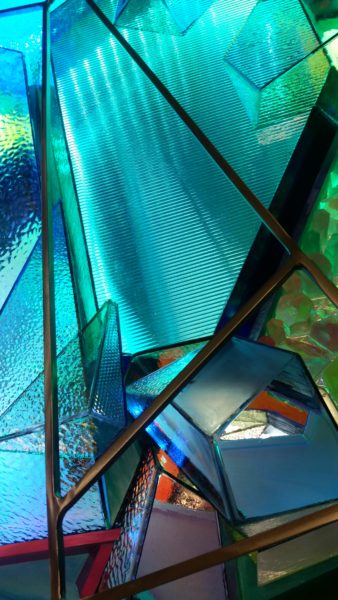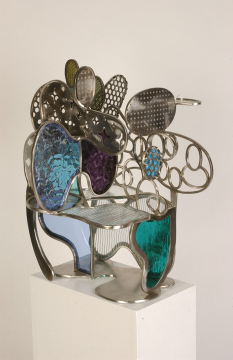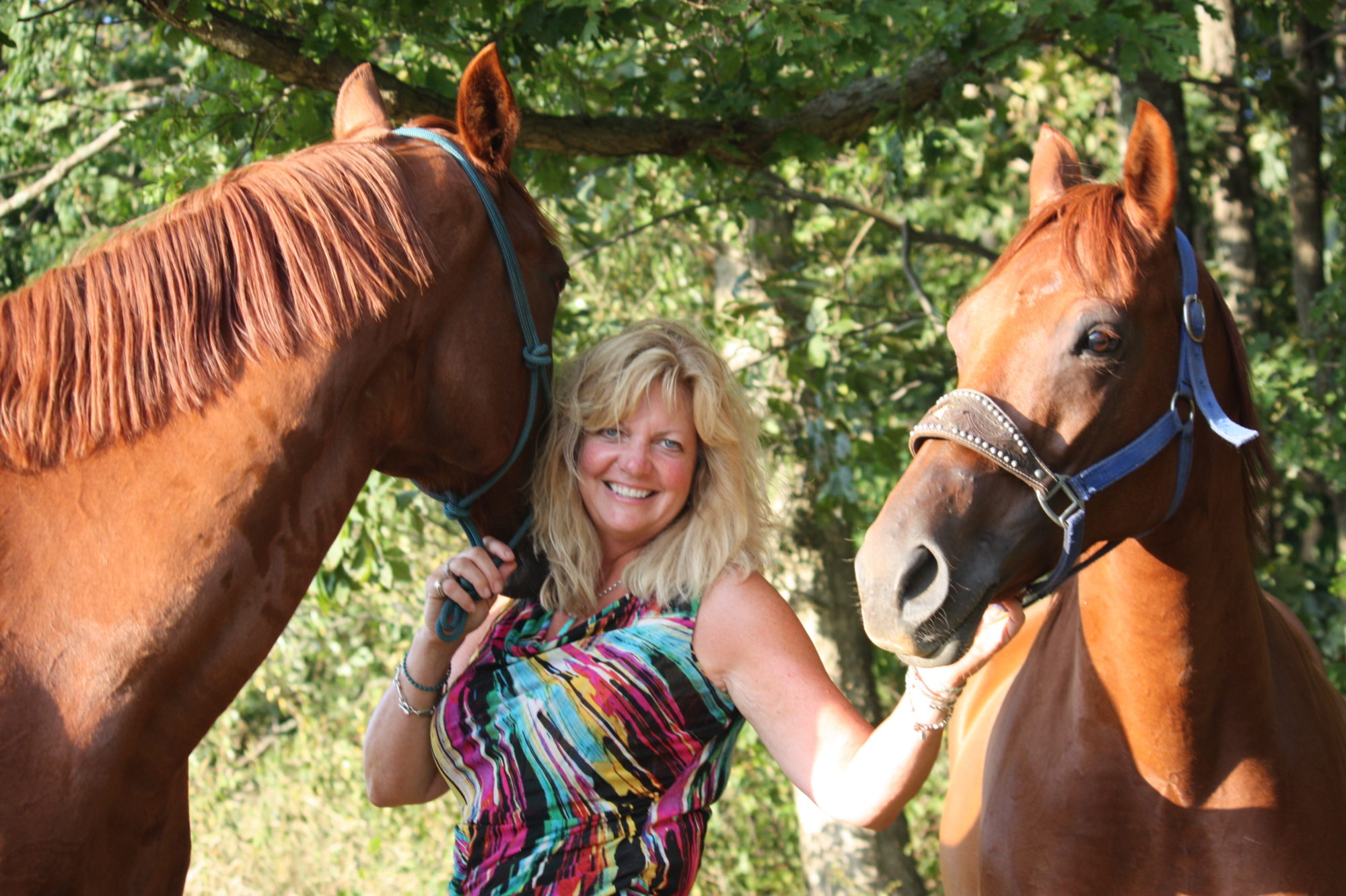Monthly interview with Morgantown area artists who identify as women
As we begin 2017, Zackquill, along with Weelunk’s column, Wheeling Women Artists, will be featuring creative women in this monthly series. We are super thrilled to start the series with WVU Director of the School of Art and Design and professional sculptor Alison Helm, who took the time out from portfolio and faculty reviews to chat with me about how she came to be a sculptor in Morgantown, the benefits of being an artist in the area, the potential for growth, advice for other artists in the area and more. See her work up now in Contemporary Terrain: Glass Artists in West Virginia, up at Nutting Gallery in the WVU Erickson Alumni Center, with an artist reception January 12, 4-6pm where Helm will talk about her work along with artist Stephanie Danz.
Z: How did you end up in West Virginia?
AH: Quite simply, I got a job here! My father was in the military so I’m from all over, mostly California, New Jersey, Ohio and New York, where I obtained my MFA from Syracuse University.
Z: How did you come to be a sculptor?
AH: Making art, drawing and painting was all I ever wanted to do, until I took sculpture from the Summit Art Center in NJ. Once I was exposed to a whole new vocabulary and taught how to manipulate materials I never looked back. My entryway in to sculpture taught me the value of craft, of using my hands to make things. Attending visiting artist lectures at the Cleveland Institute of Art as well as taking contemporary art history and seeing art in NYC, taught me the possibilities paved by artists before me. Artists like Elizabeth Murray and Frank Stella, inspired me to combine paint with sculpture. Back then, crossing the well-defined lines between different fields of art was ground breaking.
Z: How did you come to use glass and specifically regarding these works in this exhibit?
AH: I didn’t start using glass until I moved to West Virginia. Places like Seneca Center and Davis and Lynch Glass, have given me opportunities to work with glass. I find the transparency and color of glass to be useful in accomplishing a different feel of dimension to my work. The colors of glass are also unique. I always used transparency as a part of my sculptural language but in the form of plastic materials readily available in Syracuse. Plastic companies were everywhere much like we have glass companies everywhere here in WV at the time I moved here in ‘83. So, short of ordering bulky 4×8 foot sheets of plastic, I figured glass would be the next best thing. Though I didn’t know how to work with glass, someone donated glass tools to the art department so I played around, and taught myself how to work with it.
This recent wall piece in the Contemporary Terrain exhibit stems from wanting to use light and color with my sculptures because LEDs work so much better than light bulbs. I used to want to make wall pieces that involved light, but the heat of the light bulb was so hot it was impossible, it would light the wall on fire. In the advent of LED lights, it’s cheaper, cooler in temperature and available. This new feature opened up more possibilities to control my sculptural environments a lot more. Then I had the opportunity to learn about HXTAL at the Pittsburgh Center for the Arts, a glass glue takes seven days to harden unless you put in a hot box for 24 hours. You have to time using the glue in 4 hour increments. So I would mix glue, then spend morning cutting glass using templates out of paper as a pattern, then cut and sand each glass section so they would fit together. I would then glue them, and wait for 24 hours to add anything. It is a huge process dictated by the glue I used. The HXTAL is the clearest and strongest glue on the market. I am so pleased with the product, as the 5 minute clear epoxy, though useful, and faster, would turn yellow over time.

In fact, glass is not very available and it’s very expensive. Vince Bartling donated some glass to the University, which made the sculpture possible. I wouldn’t have made sculpture because of the expense. Vince has been so kind and encouraging to work with, and really generous. His partner used to work in glass and passed away and so he made this donation. I had bought glass from his partner a long time ago, so now to get this donation was a cherished opportunity. So, sometimes materials can inspire you as well as the ideas you have dormant in your head. Getting materials, really new and state of the art materials in to artists’ hands is one of the biggest challenges. Usually it takes years for new materials to trickle down to artists, by then they are common place.
Z: How do you think the environment is for artists in Morgantown?
AH: It’s honestly mediocre, except for the few galleries. Most spaces aren’t pristine or conducive for showing art. Many restaurants have been very generous to open up their doors to artists, for some artists it might be their first time in the public realm. However these shows usually don’t provide a proper place for viewers to focus on the art. Let’s face it they are focused on the food. When you have exhibition spaces solely focused on the art, the artist can do so much more with the space. The restaurants décor or colored walls may even clash with your work, so it is not ideal.
When I moved to Morgantown there weren’t too many options for high quality restaurants. I don’t know why that was the case. But once someone stuck their neck out, like Sargasso and Stefano’s, expensive, good and unique, people flocked to it! These really nice restaurants made people realize there’s a market, people want good food and they’ll pay for it. Also eating the new tasty treats that these Chefs would create became an education, they raised the bar of taste and expectations for high quality food. People discovered that Food is an art form, that these accomplished chefs found a way to blaze a new trail through new approaches to familiar ingredients. How else will one expand their palate if they don’t taste these new foods? So, with art–If we had an amazing, contemporary space with great parking and people knew there’d be a great show , they’d all come out in hoards. They don’t even realize how thirsty or hungry they are to see great art until they get out and see it. Something like that can draw people from all over the country. For example, when I travel South, I time my trips for when I leave Morgantown, so I can stop in Tamarack to have lunch, because I know they have good food and art. Every year in December, I travel to Miami/Basel, the largest art fair in the country, because I know I will be inspired by great art work. And without fail, every year, I am surprised by something new.
I’m lucky I work in the CAC building where I see art all the time in the Mesaros Galleries. I love our exhibits! Also, The Art Museum of West Virginia University has fantastic exhibits and perfect exhibition spaces. They have also raised the bar for quality exhibition spaces, by showing how art should be exhibited. Downtown provides a few spaces to show art, but somebody has to make that first move for something ideal to happen. Morgantown has a lot of potential. Artists need opportunities to show their work so that they can be seen, so they can connect to the people that will buy art. We need to come together, form alliances and with a good business person there are tremendous possibilities here. We could also use a place like Tamarack–accessible, where you can always see good art. Art is a visual education, you need to see it to be educated by it.

Z: Do you have any advice for artists in the area?
AH: Keep making art because everyone else will quit! Stay in the game. I think if a group of artists could form something like the” Torpedo Factory” here in Morgantown, that would be a great start. The Tech Shop in Pittsburgh provides a wonderful example of getting technology in to the hands of interested people. People who like to make things and collaborate. You never know what will happen when you combine all these creative elements together. Here an engineer or a tech person would run in to an artist, get to know each other and work together to make new things happen. You have to create the environment for that to happen, you have to facilitate it, to facilitate change.
Z: What is your favorite thing about being an artist in the area?
AH: The artists – you can get to know artists, and businesses here in WV because it’s small. People are open and friendly. That’s important for accessing anything. Also it’s quiet here, there are not a lot of distractions so one can concentrate on their work and make advances. The taxes are low, so you can have property and be set with a studio. People are more connected because of the internet. The landscape has changed and will continue to change. Artists don’t necessarily need to live in NYC to be seen or have access to the art market.
Z: What would people be surprised to know about you?
AH: I have two son’s that I am very proud of, we all share a Tesla P85D, which we charge with solar panels on the roof of the house. It’s like driving a rollercoaster. Very fun, very fast! I have four horses and I board two that live on my property. It always amazes me to see how they can communicate with each other and me, by using just body language. They’re a large part of my life. I see them every morning and night. It’s constant entertainment. I also enjoy kayaking and working out!
–
Alison Helm received her MFA from Syracuse University and her BFA from the Cleveland Institute of Art. Her work has been exhibited extensively at galleries, museums, and sculpture parks throughout the United States, Japan, Taiwan, and Mexico including the Cultural Center in Charleston, WV, the National Museum for Women in the Arts in Washington, D.C., the Carnegie Museum, Pittsburgh, PA, and the Huntington Museum, Charleston, WV. She has completed various sculpture commissions including Splendor of the Seas for the deck of one of the largest cruise ships in the world owned by Caribbean Cruise lines, and two commissions for the Clarksburg Veterans Memorial Hospital. Professor Helm has received two NEA Grants for Underserved Artists, the WVU Outstanding Research Award for Creative Activity (2001), and was nominated for the Claude Worthington Benedum Foundation Distinguished Scholar Award.
Sally Deskins is an artist, writer and curator. She curated Contemporary Terrain: Glass Artists in West Virginia, at Nutting Gallery in the WVU Erickson Alumni Center, One Alumni Drive, in Morgantown. The exhibit runs thru January 28 and includes an artists’ reception January 12, 4-6pm including an informal art talk with Alison Helm and Stephanie Danz at 5pm. Deskins is also on the Board of Directors of Arts Monongahela, currently calling for artists to exhibit in the May 2016-2017 season.

